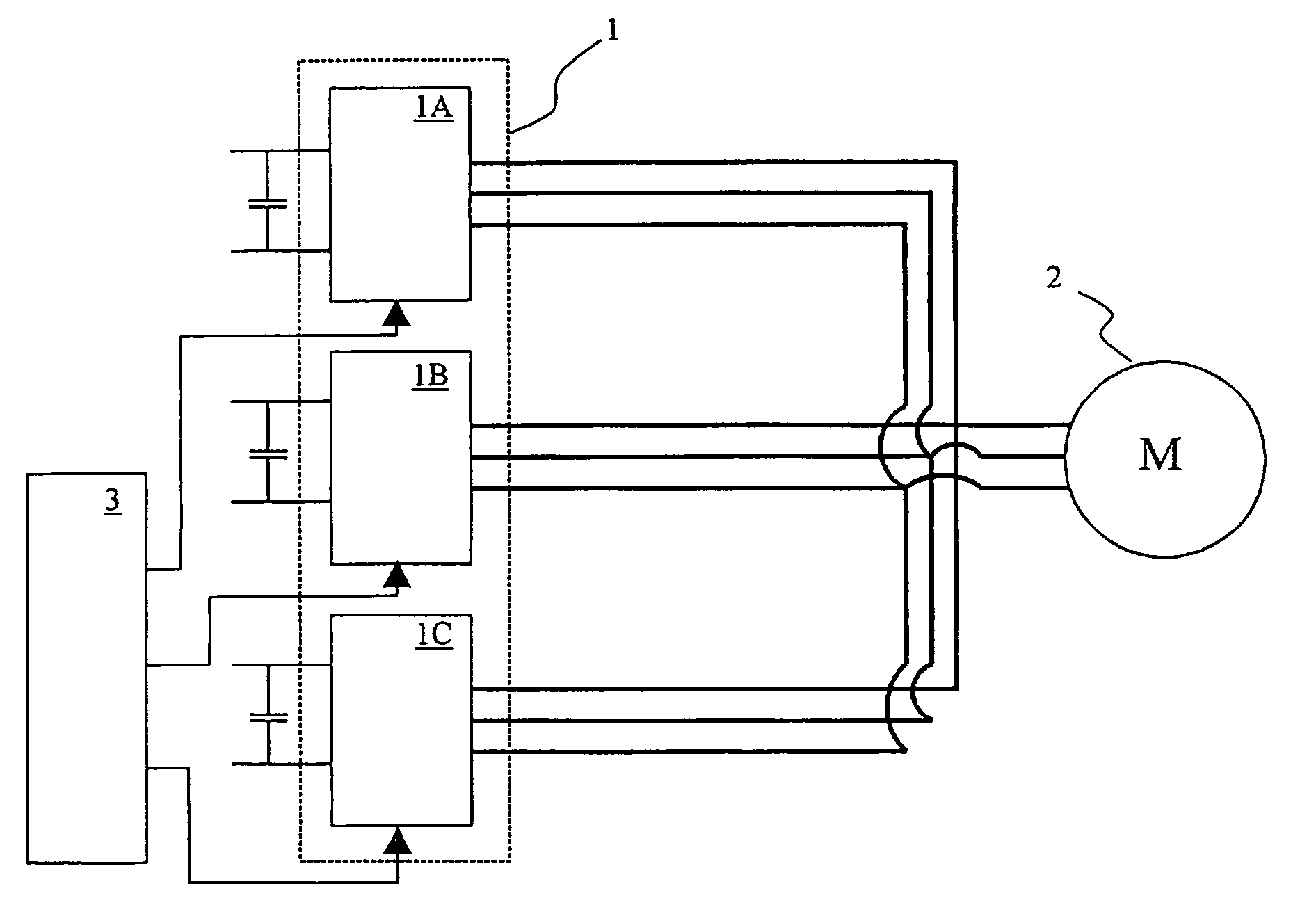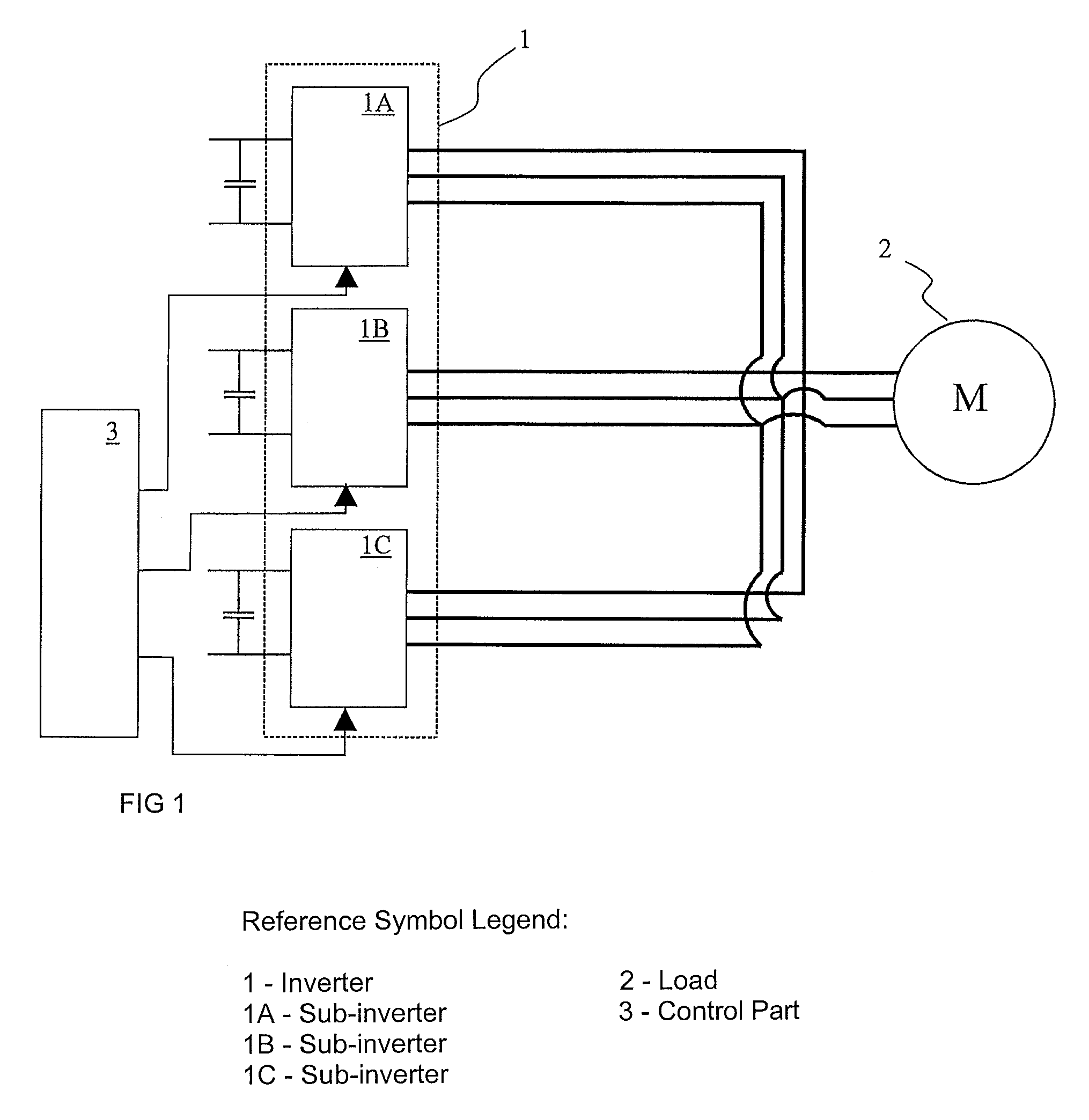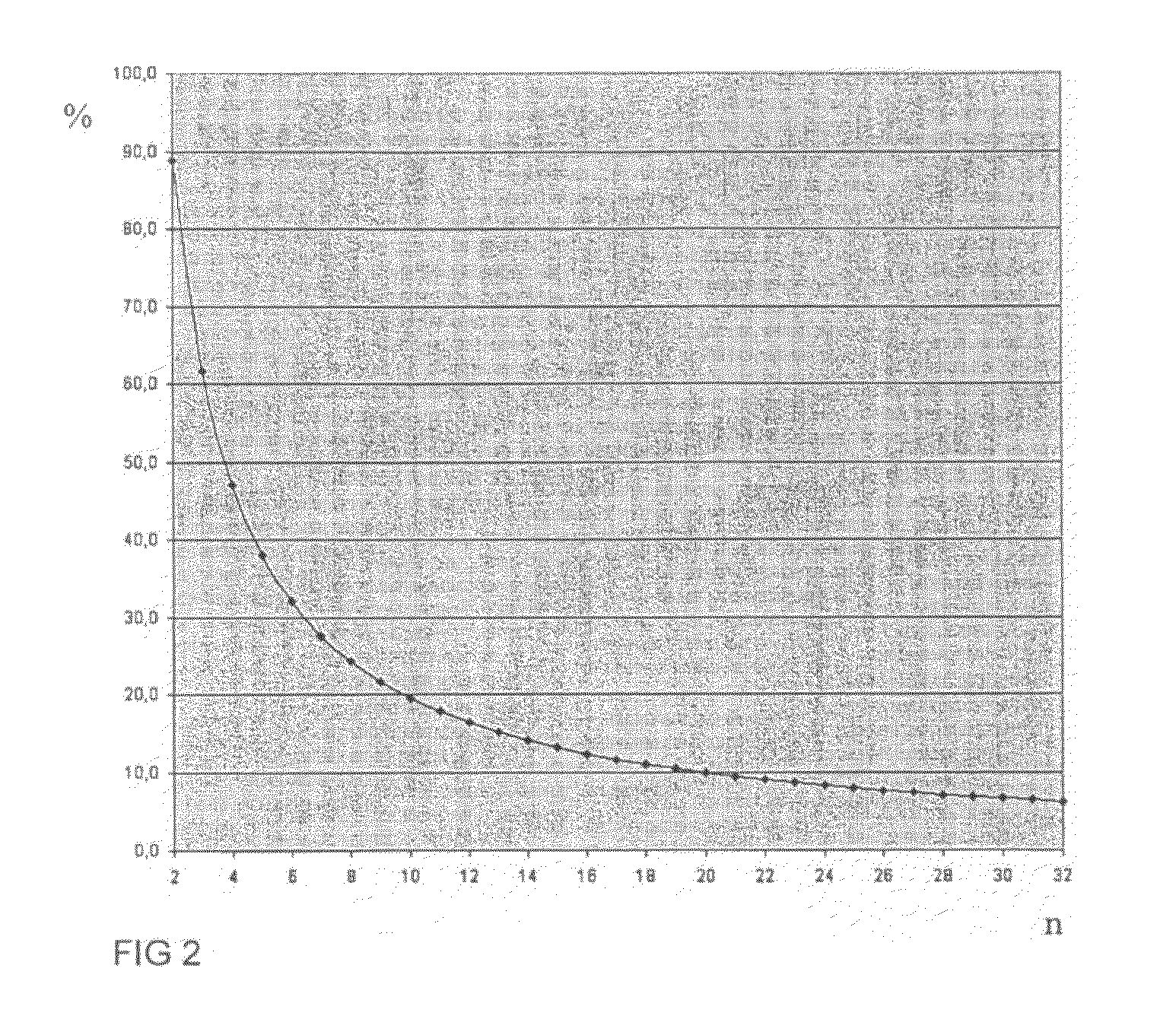Method and arrangement in connection with inverter
a technology of inverter and arrangement, which is applied in the direction of power conversion systems, dc source parallel operation, electrical apparatus, etc., can solve the problems of diodes being overheated, increasing costs, and complicating spare parts service, so as to reduce the rate of voltage rise and the voltage of the load. , the effect of increasing the voltag
- Summary
- Abstract
- Description
- Claims
- Application Information
AI Technical Summary
Benefits of technology
Problems solved by technology
Method used
Image
Examples
Embodiment Construction
[0020]FIG. 1 shows the principle of sub-inverters 1A, 1B, 1C operating in parallel and together constituting an inverter 1, which is controlled to generate the desired voltage for a load 2. In the present description, a load refers to a motor, but it is clear, however, that the type of load bears no significance to the application of the invention.
[0021]The sub-inverters operating in parallel are connected to the load, each with a specific cable, and these sub-inverter cables are interconnected at the motor end and further connected to the load. The interconnection of the cables is naturally performed by interconnecting the corresponding phases of each cable. FIG. 1 shows this cable connection before the load in order to increase clarity. In real terms, this connection is performed in the motor conduit box or the like by using busbar structures, for example.
[0022]FIG. 1 also shows a control part 3 for controlling the inverter and for transmitting switching instructions to each sub-i...
PUM
 Login to View More
Login to View More Abstract
Description
Claims
Application Information
 Login to View More
Login to View More - R&D
- Intellectual Property
- Life Sciences
- Materials
- Tech Scout
- Unparalleled Data Quality
- Higher Quality Content
- 60% Fewer Hallucinations
Browse by: Latest US Patents, China's latest patents, Technical Efficacy Thesaurus, Application Domain, Technology Topic, Popular Technical Reports.
© 2025 PatSnap. All rights reserved.Legal|Privacy policy|Modern Slavery Act Transparency Statement|Sitemap|About US| Contact US: help@patsnap.com



